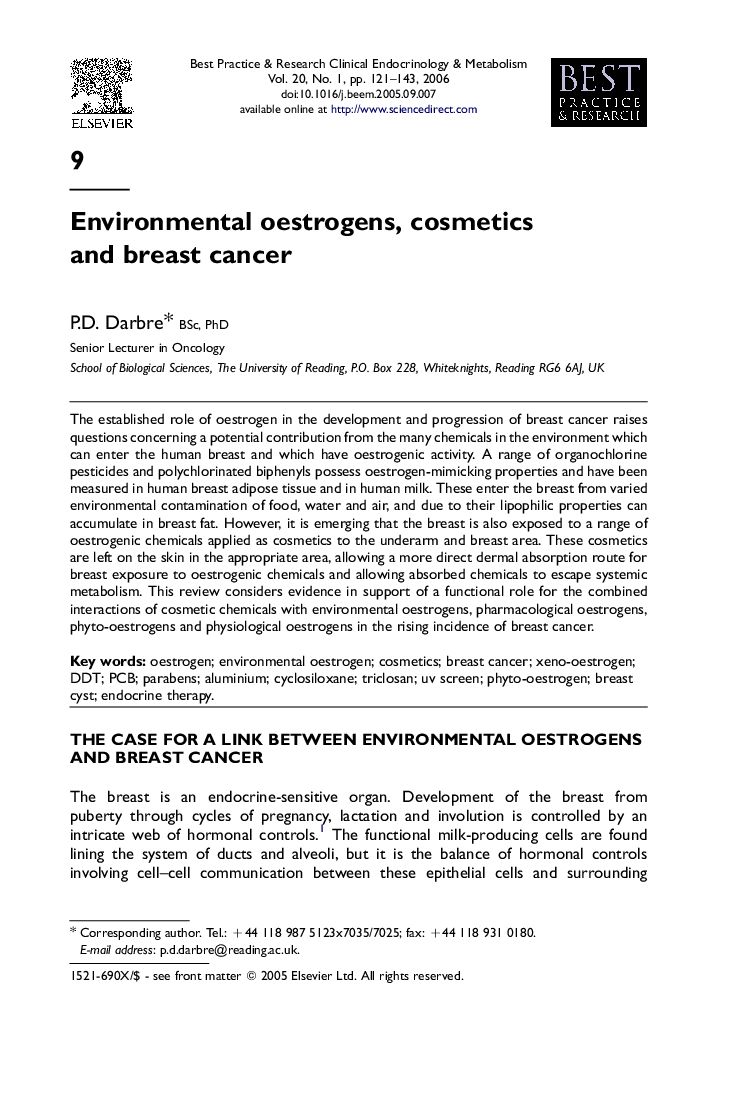| Article ID | Journal | Published Year | Pages | File Type |
|---|---|---|---|---|
| 2792285 | Best Practice & Research Clinical Endocrinology & Metabolism | 2006 | 23 Pages |
The established role of oestrogen in the development and progression of breast cancer raises questions concerning a potential contribution from the many chemicals in the environment which can enter the human breast and which have oestrogenic activity. A range of organochlorine pesticides and polychlorinated biphenyls possess oestrogen-mimicking properties and have been measured in human breast adipose tissue and in human milk. These enter the breast from varied environmental contamination of food, water and air, and due to their lipophilic properties can accumulate in breast fat. However, it is emerging that the breast is also exposed to a range of oestrogenic chemicals applied as cosmetics to the underarm and breast area. These cosmetics are left on the skin in the appropriate area, allowing a more direct dermal absorption route for breast exposure to oestrogenic chemicals and allowing absorbed chemicals to escape systemic metabolism. This review considers evidence in support of a functional role for the combined interactions of cosmetic chemicals with environmental oestrogens, pharmacological oestrogens, phyto-oestrogens and physiological oestrogens in the rising incidence of breast cancer.
